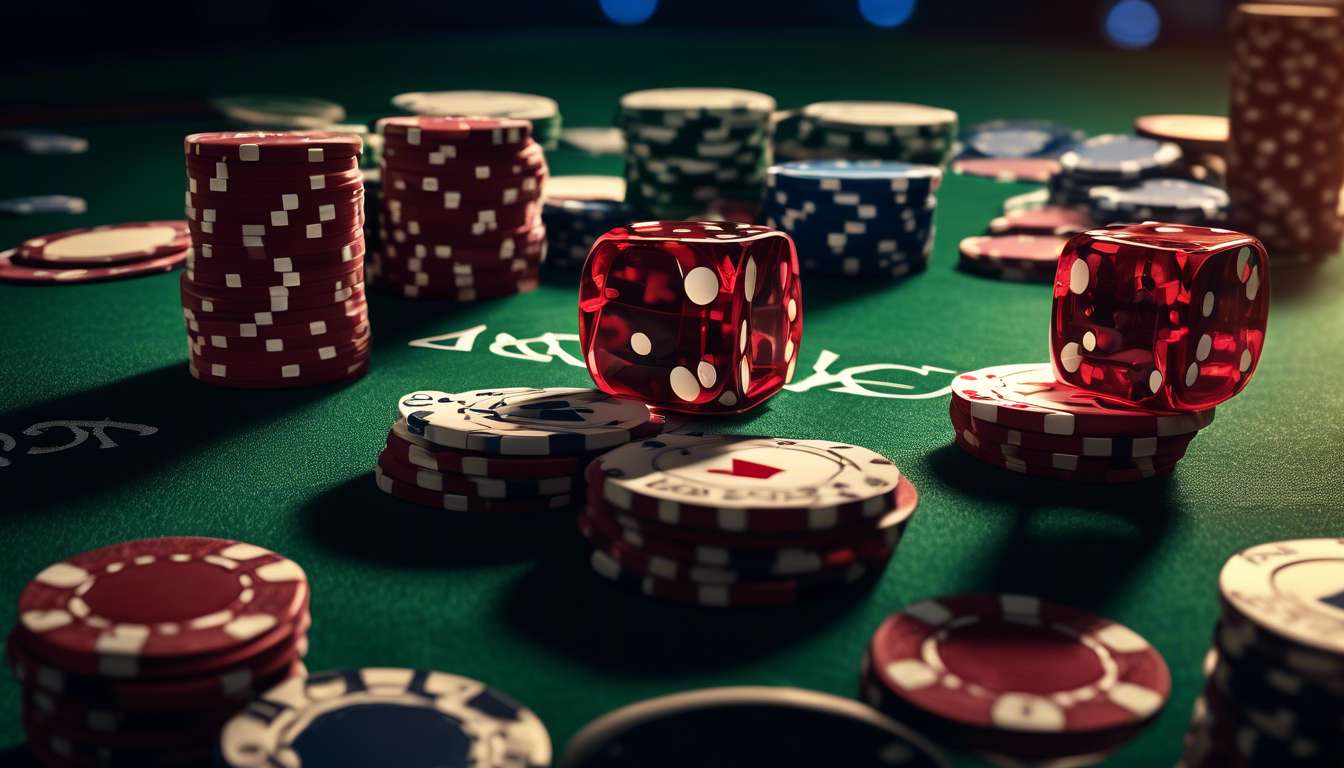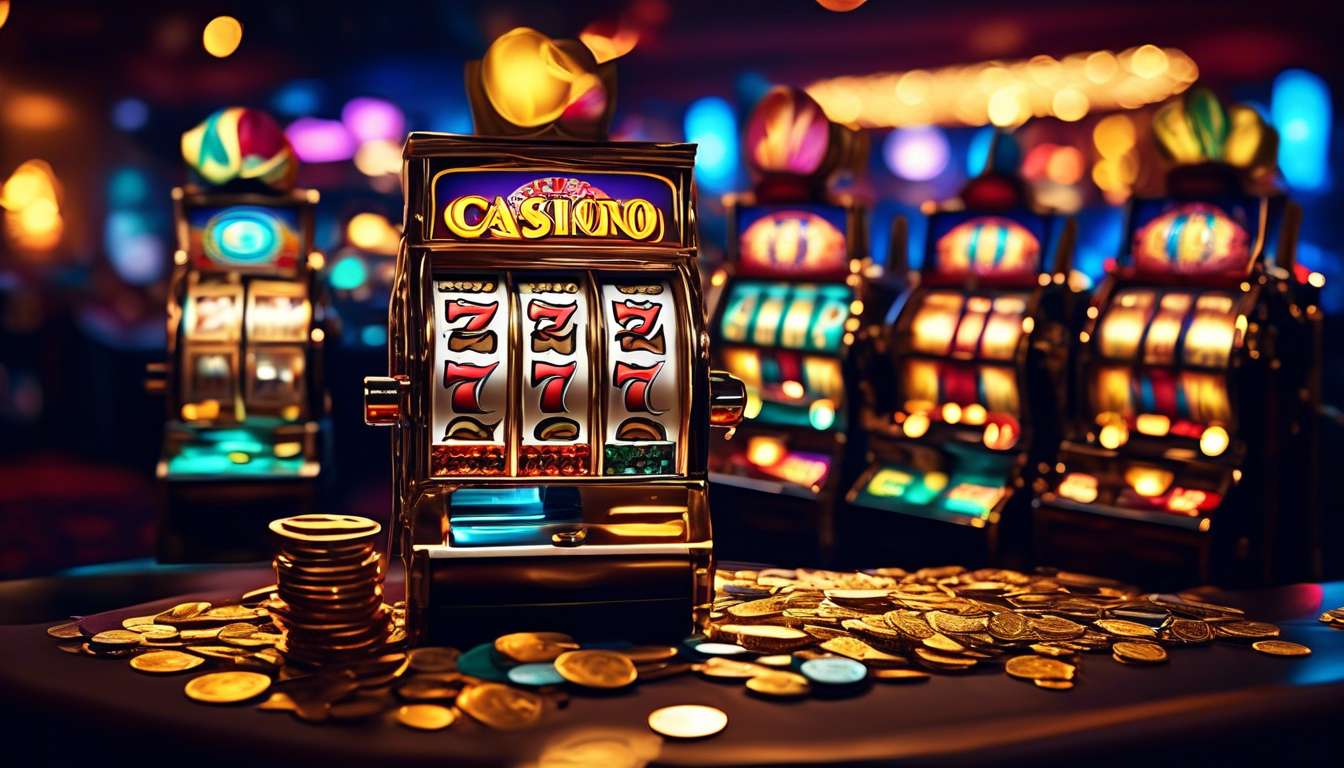When we step up to a slot machine, there’s a shared thrill in the air—a collective anticipation that perhaps this time, the spinning reels will align in our favor. Yet, behind the flashing lights and enticing sounds lies a system of probabilities and percentages that govern our chances of winning.
As we delve into the world of slot machine payouts, it’s crucial for us to understand the mechanics behind those enticing jackpots. The key lies in the payout percentage, a term often tossed around but less frequently understood.
Payout Percentage:
- This percentage represents the amount of money that a slot machine is programmed to return to players over time.
- For example, a machine with a 95% payout percentage will return $95 for every $100 wagered, over the long run.
Determining Payout Percentage:
- Game Design: Manufacturers set these percentages based on the design and algorithms of the game.
- Regulations: Casino operators and regulatory bodies may influence or set minimum payout percentages to ensure fair play.
Understanding these percentages is crucial, as they have a direct impact on our gaming experience. By demystifying these concepts, we can better navigate our casino adventures, armed with knowledge that enhances both our enjoyment and strategy.
Join us as we uncover the fascinating intricacies of slot machine payouts and what they truly signify in our pursuit of luck.
The Significance of Payout Percentages
Payout Percentages in Slot Machines
Payout percentages are crucial in slot machines because they indicate how much of the total money wagered is returned to players over time. By understanding these percentages, we can make more informed choices about which games might offer better chances of winning.
Slot machines are designed with a specific payout percentage in mind, reflecting how much money we, as a community, can expect to receive back from what we collectively wager.
The Role of Regulatory Bodies
Regulatory bodies play a vital role in ensuring the fairness and accuracy of payout percentages. They:
- Ensure that the game design meets certain standards.
- Guarantee that advertised payout percentages are accurate and fair.
This regulation helps us feel secure and connected, knowing that there is oversight ensuring fairness in the games we play.
Choosing a Slot Machine
When we choose a machine, recognizing the payout percentage can be a shared experience. This fosters a sense of belonging as we navigate the vibrant world of slot gaming together, with confidence and camaraderie.
Impact of Game Design on Payouts
The design of a slot machine significantly affects its payout percentages, shaping both the gaming experience and potential returns.
Game Design Elements
- Number of reels
- Paylines
- Bonus features
These elements create an engaging atmosphere that draws players in and directly impact payout percentages by determining how often winning combinations appear. Developers must balance excitement and fairness, ensuring players feel part of a thrilling community without being misled.
Visual Appeal and Themes
Players often find themselves captivated by vibrant graphics and themes. These elements are carefully crafted to enhance the sense of belonging and engagement with the game.
Payout Structures
The intricacy of game design translates into payout structures that can:
- Reward players frequently with smaller wins
- Offer larger jackpots less often
Understanding this balance helps players make informed choices about which games align with their preferences.
Regulatory Standards and Game Design
Although regulatory bodies set standards to ensure fairness, the creativity and strategy behind game design remain pivotal in determining how payout percentages are ultimately experienced by players.
Influence of Regulatory Bodies
To ensure fair play and protect players, regulatory authorities establish guidelines that every game developer must adhere to. We, as a community of players and enthusiasts, rely on these regulatory bodies to maintain the integrity of the games we love.
By enforcing rules on payout percentages, they ensure that slot machines are designed to provide a fair chance to everyone.
In the world of game design, understanding the influence of these regulatory bodies is crucial. They dictate the minimum payout percentages that developers must integrate into their games.
By doing so, they protect us from unfair practices and help maintain our trust in the gaming industry. Moreover, these regulations create a standard that every developer must follow, fostering a sense of equality and fairness across different platforms.
We can enjoy our gaming experiences knowing that there’s a level playing field. These regulatory frameworks are the backbone of a trustworthy gaming environment, ensuring our enjoyment and protection in every spin.
Key Factors in Determining Percentages
When determining slot machine payout percentages, several critical factors come into play that developers must carefully balance.
Game Design
- Game design plays a significant role in setting payout percentages.
- Developers need to create engaging experiences while ensuring the games remain profitable.
- It’s like crafting a fine recipe; the balance of ingredients must be just right to satisfy both the players’ enjoyment and the casino’s financial goals.
- The challenge is to design games that not only captivate but also provide fair chances of winning.
Regulatory Compliance
- Regulatory bodies impose guidelines that developers must adhere to, ensuring that the payout percentages align with industry standards.
- These regulations are crucial as they ensure that everyone feels secure and fairly treated.
- The goal is to create a trustworthy community where gaming experiences are both enjoyable and equitable.
Market Competition
- Market competition influences how payout percentages are set.
- To attract and retain players, it is often necessary to offer competitive payout rates.
- A welcoming environment encourages loyalty and repeat visits, making competitive percentages essential for success.
By balancing these factors, developers can create a harmonious gaming experience that meets the needs of both players and casinos.
Interpreting Payout Percentage Figures
When interpreting payout percentage figures, it’s essential to understand how these numbers reflect the game’s potential profitability for both players and casinos.
Payout percentages, also known as return to player (RTP) rates, indicate the proportion of total bets that a slot machine is expected to pay back to players over time.
- A higher RTP means more potential returns for players.
- A lower RTP favors the casino’s profits.
In the context of game design, developers carefully craft these percentages to balance excitement and fairness. They aim to create engaging experiences that keep players returning while ensuring the casino remains profitable. This involves a delicate dance of mathematics and psychology, all regulated by governing bodies that ensure fairness and transparency.
Regulatory bodies play a crucial role in overseeing these payout percentages by:
- Ensuring they meet legal standards.
- Protecting player interests.
By understanding these figures, players become part of a community of informed individuals who appreciate both the thrill and responsibility of gaming.
Strategies for Maximizing Payouts
Maximizing Returns on Slot Machines
To enhance your chances of winning when playing slot machines, consider the following practical strategies:
1. Focus on Higher Payout Percentages
-
Choose machines with higher payout percentages. These percentages indicate the expected return to a player over time and are influenced by the game’s design.
-
Look for this information posted on the machine itself or online, as opting for games with higher returns increases the likelihood of walking away with more cash.
2. Consider Game Design
-
Select slot games that offer bonuses or free spins, as these features can significantly enhance your payouts.
-
Align your choice of games with your playing style and preferences to ensure maximum engagement and enjoyment, which may ultimately lead to better winnings.
3. Understand the Role of Regulatory Bodies
-
Regulatory bodies ensure that slot machines comply with fair play standards, which means the games are not rigged against players.
-
By staying informed about these regulatory aspects, you can feel more confident and empowered to make better gaming choices.
By incorporating these strategies, you can enjoy slot machines while maximizing your chances for success.
Mythbusting Common Misconceptions
Many of us have heard myths about slot machines that can mislead players into making poor decisions.
One common misconception is that machines that haven’t paid out in a while are "due" for a win. In reality:
- Slot machines operate on random number generators.
- Each spin is independent of the last.
- Payout percentages, determined by game design, remain constant.
- There is no magical strategy to predict a win.
Another myth suggests that casinos can alter slot machine payouts at will. However, this is not true because:
- Regulatory bodies strictly oversee and ensure compliance with legal standards.
- Payout percentages are set according to the game’s design.
- These percentages cannot be changed on a whim.
It’s crucial for us as a community to trust the systems in place, knowing that fairness is embedded in the game’s structure. By debunking these myths together, we can approach slot machines with a clear understanding and embrace a more informed and enjoyable gaming experience.
Long-Term Effects on Player Experience
Understanding Slot Machine Payouts
Over time, our understanding of slot machine payouts can significantly shape how we perceive and enjoy the gaming experience. Payout percentages are crucial because they influence our expectations and satisfaction.
The design of a game isn’t just about flashy graphics or entertaining themes; it’s also about how we feel when we win or lose. By knowing that payout percentages are a key aspect of game design, we can appreciate the thought and regulation that goes into creating a fair playing field.
Role of Regulatory Bodies
Regulatory bodies play a crucial role in ensuring these payout percentages are transparent and adhered to. This provides us with:
- A sense of security
- Trust in the gaming system
When we’re part of a community that values fair play, we feel more connected and engaged.
Making Informed Decisions
Understanding these long-term effects helps us make informed decisions, enhancing our overall experience. Together, let’s appreciate the balance between:
- Luck
- Chance
- Thoughtfully crafted gaming adventures
By doing so, we can fully enjoy the gaming journeys we embark on.
Conclusion
In conclusion, understanding slot machine payout percentages can enhance your gaming experience. By grasping the key factors that determine these percentages and debunking common myths, you can maximize your payouts.
Key Points to Remember:
- Game design and regulatory bodies play a crucial role in shaping these numbers.
So, next time you hit the casino floor, keep these insights in mind to make informed decisions and enjoy a more rewarding gameplay experience.





